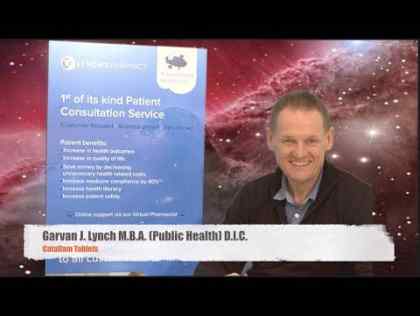
What is it?
Knee pain may be the result of an injury, such as a ruptured ligament or torn cartilage. Or, certain medical conditions, including arthritis, gout and infection, may be at the root of your knee pain.
Many relatively minor instances of knee pain respond well to self-care measures. More-serious injuries, such as a ruptured ligament or tendon, may require surgical repair.
Although every knee problem can't be prevented — especially if you're active — you can take certain steps to reduce the risk of injury or disease.
Symptoms
A knee injury can affect any of the ligaments, tendons or fluid-filled sacs (bursae) that surround your knee joint as well as the bones, cartilage and ligaments that form the joint itself. Because of the knee's complexity, the number of structures involved, the amount of use it gets over a lifetime, and the range of injuries and diseases that can cause knee pain, the signs and symptoms of knee problems can vary widely.
Some of the more common knee injuries and their signs and symptoms include the following:
Ligament injuries.
Your knee contains four ligaments — tough bands of tissue that connect your thighbone (femur) to your lower leg bones (tibia and fibula). You have two collateral ligaments — one on the inside (medial collateral ligament) and one on the outside (lateral collateral ligament) of each knee. The other two ligaments are inside your knee and cross each other as they stretch diagonally from the bottom of your thighbone to the top of your shinbone (tibia). The posterior cruciate ligament (PCL) connects to the back of your shinbone, and the anterior cruciate ligament (ACL) connects near the front of your shinbone. A tear in one of these ligaments, which may be caused by a fall or contact trauma, is likely to cause:
- Immediate pain that worsens when you try to walk or bend your knee
- A popping sound
- An inability to bear weight on the injured knee
- A feeling that the knee might buckle or give way
Tendon injuries (tendinitis).
Tendinitis is irritation and inflammation of one or more tendons — the thick, fibrous cords that attach muscles to bones. Athletes, such as especially runners, skiers and cyclists, are prone to develop inflammation in the patellar tendon, which connects the quadriceps muscle on the front of the thigh to the larger lower leg bone (tibia). If your knee pain is caused by tendinitis, some of the signs and symptoms include:
- Pain, in one or both knees
- Swelling in the front of the knee or just below the kneecap
- Worsening pain when you jump, run, squat or climb stairs
- An inability to completely extend or straighten your knee
Meniscus injuries.
The meniscus is a C-shaped piece of cartilage that curves within your knee joint. Meniscus injuries involve tears in the cartilage, which can occur in various places and configurations. Signs and symptoms of this type of injury include:
- Pain
- Mild to moderate swelling that occurs slowly, as long as 24 to 36 hours after the injury
- An inability to straighten the knee completely; the knee may feel locked in place
Bursitis.
Some knee injuries cause inflammation in the bursae, the small sacs of fluid that cushion the outside of your knee joint so that tendons and ligaments glide smoothly over the joint. Bursitis can lead to:
- Warmth
- Swelling
- Redness
- Pain, even at rest
- Aching or stiffness when you walk
- Considerable pain when you kneel or go up and down stairs
- Fever, pain and swelling if the bursa located over your kneecap bone (prepatellar bursa) becomes infected
Loose body.
Sometimes injury or degeneration of bone or cartilage can cause a piece of bone or cartilage to break off and float in the joint space. This may not create any problems unless the loose body interferes with knee joint movement — the effect is something like a pencil caught in a door hinge — leading to pain and a locked joint.
Dislocated kneecap.
This occurs when the triangular bone (patella) that covers the front of your knee slips out of place, usually to the outside of your knee. You'll be able to see the dislocation, and your kneecap is likely to move excessively from side to side. Signs and symptoms of a dislocated kneecap include:
- Intense pain
- Swelling
- Difficulty walking or straightening your knee
Osgood-Schlatter disease.
Primarily affecting athletic teens and preteens, this overuse syndrome causes:
- Pain, usually worse with activity, especially running and jumping
- Swelling
- Tenderness at the bony prominence (tibial tuberosity) just below the kneecap
The discomfort can last a few months and may continue to recur until your teen or preteen stops growing.
Iliotibial band syndrome.
This occurs when the ligament that extends from the outside of your pelvic bone to the outside of your tibia (iliotibial band) becomes so tight that it rubs against the outer portion of your femur. Distance runners are especially susceptible to iliotibial band syndrome, which generally causes:
- A sharp, burning pain on the outer side of the knee that usually begins after longer distance runs
- Pain that initially goes away with rest from running, but in time may persist when you walk or go up and down stairs
With this type of knee injury, there usually isn't swelling and you'll likely have normal range of motion.
Hyperextended knee.
In this injury, your knee extends beyond its normally straightened position so that it bends back on itself. Sometimes the damage is relatively minor, with pain and swelling when you try to extend your knee. But a hyperextended knee may also lead to a partial or complete ligament tear, especially in your ACL.
Septic arthritis.
Sometimes your knee joint can become infected, leading to swelling, pain and redness. There's usually no trauma before the onset of pain. Septic arthritis often occurs with a fever.
Rheumatoid arthritis.
The most debilitating of the more than 100 types of arthritis, rheumatoid arthritis can affect almost any joint in your body, including your knees. Common signs and symptoms of rheumatoid arthritis include:
- Pain
- Swelling
- Aching and stiffness, especially when you get up in the morning or after periods of inactivity
- Loss of motion in your knees and eventually deformity of the knee joints
- Sometimes, a low-grade fever and a general sense of not feeling well (malaise)
Although rheumatoid arthritis is a chronic disease, it tends to vary in severity and may even come and go. Periods of increased disease activity — called flare-ups or flares — often alternate with periods of remission.
Osteoarthritis.
Sometimes called degenerative arthritis, this is the most common type of arthritis. It's a wear-and-tear condition that occurs when the cartilage in your knee deteriorates with use and age. Osteoarthritis usually develops gradually and tends to cause:
- Varying degrees of pain, especially when you stand or walk
- Swelling
- Stiffness, especially in the morning and after you've been active
- Creaking or popping sounds
- A loss of flexibility in your knee joints
Gout and pseudogout.
Gout, a type of arthritis, is likely to cause:
- Redness.
- Swelling.
- Intense knee pain that comes on suddenly — often at night — and without warning. The pain typically lasts five to 10 days and then stops. The discomfort subsides gradually over one to two weeks, leaving your knee joints apparently normal and pain-free.
Another condition, pseudogout (chondrocalcinosis), which mainly occurs in older adults, can cause:
- Severe inflammation
- Intermittent attacks of sudden pain and swelling in large joints, especially the knees
Chondromalacia of the patella, or patellofemoral pain.
This is a general term that refers to pain arising between your patella and the underlying thighbone (femur). It's common in young adults, especially those who have a slight misalignment of the kneecap; in athletes; and in older adults, who usually develop the condition as a result of arthritis of the kneecap. Chondromalacia of the patella causes:
- Pain and tenderness in the front of your knee that's worse when you sit for long periods, when you get up from a chair, and when you climb or descend stairs.
- A grating or grinding sensation may be present when you extend your knee.
Causes
In the simplest terms, a joint occurs wherever two bones come together. But that definition doesn't begin to convey the complexity of joints, which provide your body with flexibility, support and a wide range of motion.
You have four types of joints: fixed, pivot, ball-and-socket and hinge. Your knees are hinge joints, which, as the name suggests, work much like the hinge of a door, allowing the joint to move backward and forward. Your knees are the largest and heaviest hinge joints in your body. They're also the most complex. In addition to bending and straightening, they twist and rotate. This makes them especially vulnerable to damage, which is why they sustain more injuries on average than do other joints.
A closer look at your knees
Your knee joint is essentially four bones held together by ligaments. Your thighbone (femur) makes up the top part of the joint, and two lower leg bones, the tibia and the fibula, comprise the lower part. The fourth bone, the patella, slides in a groove on the end of the femur.
Ligaments are large bands of tissue that connect bones to one another. In the knee joint, four main ligaments link the femur to the tibia and help stabilise your knee as it moves through its arc of motion. These include the collateral ligaments along the inner (medial) and outer (lateral) sides of your knee and the anterior cruciate ligament (ACL) and posterior cruciate ligament (PCL), which cross each other as they stretch diagonally from the bottom of your thighbone to the top of your shinbone.
Other structures in your knee include:
- Tendons. These fibrous bands of tissue connect muscles to bones. Your knee has two important tendons, which make it possible for you to straighten or extend your leg: the quadriceps tendon, which connects the long quadriceps muscle on the front of your thigh to the patella, and the patellar tendon, which connects the patella to the tibia.
- Meniscus. This C-shaped cartilage, which curves around the inside and outside of your knee, cushions your knee joint.
- Bursae. A number of these fluid-filled sacs surround your knee. They help cushion your knee joint so that ligaments and tendons slide across it smoothly.
Normally, all of these structures work together smoothly. But injury and disease can disrupt this balance, resulting in pain, muscle weakness and decreased function.
Some common causes of knee pain and injuries include:
- A blow to the knee, either from contact during sports, a fall or a car accident
- Repeated stress or overuse, which may occur from playing sports or if your work or hobby requires doing the same activity over and over again
- Sudden turning, pivoting, stopping, cutting from side to side, which happens frequently during certain sports
- Awkward landings from a fall or from jumping during sports, such as basketball
- Rapidly growing bones, which are especially prone to injury during sports
- Degeneration from aging
Risk factors
A number of factors can increase your risk of having knee problems, including:
- Excess weight. Being overweight or obese increases stress on your knee joints, even during ordinary activities such as walking or going up and down stairs. It also puts you at increased risk of osteoarthritis by accelerating the breakdown of joint cartilage.
- Overuse. Any repetitive activity, from cycling a few miles every morning to gardening all weekend, can fatigue the muscles around your joints and lead to excessive loading stress. This causes an inflammatory response that damages tissue. If you don't allow your body time to recover, the cycle of inflammation and microdamage continues, putting you at increased risk of injury. It's not repeated motion itself that's to blame, but rather the lack of adequate recovery time. That's why current strength training guidelines advise against working the same muscle group on consecutive days.
- Lack of muscle flexibility or strength. A lack of strength and flexibility are among the leading causes of knee injuries. Tight or weak muscles offer less support for your knee because they don't absorb enough of the stress exerted on your knee joints.
- Lack of neuromuscular control. Studies have shown that some people who have abnormal movement patterns of the leg during activities such as squatting and stepping off a step may be predisposed to knee injury.
- Mechanical problems. Certain structural abnormalities, such as having one leg shorter than the other, misaligned knees and even flat feet, can make you more prone to knee problems.
- High-risk sports and activities. Some sports and activities put greater stress on your knees than do others. Alpine skiing with its sharp twists and turns and potential for falls, basketball's jumps and pivots, and the repeated pounding your knees take when you run or jog all increase your risk of injury.
- Previous injury. Having a previous knee injury makes it more likely that you'll injure your knee again.
- Age. Certain types of knee problems are more common in young people — Osgood-Schlatter disease and patellar tendinitis, for example. Others, such as osteoarthritis, gout and pseudogout, tend to affect older adults.
- Sex. For reasons that aren't entirely clear, your sex may increase your risk of some types of knee injuries. Teenage girls are more likely than are boys to experience an ACL tear or a dislocated kneecap. Boys, on the other hand, are at greater risk of Osgood-Schlatter disease and patellar tendinitis than girls are.
Complications
Not all knee pain is serious. But some knee injuries and medical conditions, such as osteoarthritis, can lead to increasing pain, joint damage and even disability if left untreated. And having a knee injury — even a minor one — makes it more likely that you'll have similar injuries in the future.
Diagnosis
Pinpointing the reason for knee pain can be challenging because of the wide range of possible causes. Often, a comprehensive medical history and thorough physical exam play a larger role in knee pain diagnosis than does any single test.
In addition to asking about your pain — its location, what it feels like, when it started, what makes it seem better or worse — your doctor may inquire about your exercise program, sports you play or used to play, and any previous injuries to your knee joint. During the physical exam, your doctor is likely to inspect your knee for swelling, pain, tenderness, warmth and visible bruising; check your range of motion; and perform a number of maneuvers to evaluate the integrity of the structures in your knee.
One of these maneuvers, the Lachman test, helps detect injuries to the ACL. In the Lachman test, your knee is bent at a 30-degree angle and your doctor gently moves your lower leg forward at the knee. If your lower leg moves freely without reaching a firm endpoint, you're likely to have a torn ACL. Other maneuvers assess the PCL, tendons and menisci.
These tests may not be accurate in some instances — when movement in your knee is restricted by swelling or by contracted muscles in the back of your leg, for example. In that case, your doctor may order a magnetic resonance imaging (MRI) test or another imaging test to aid in the diagnosis.
Unlike an X-ray, which isn't useful for viewing ligaments, tendons and muscles, an MRI can help identify injuries and damage to soft tissue. MRI uses a powerful magnet to create 3-D images of the inside of your knee. Generally, no special preparation is needed for this test; however, if you're bothered by confined spaces, be sure to let your doctor know. He or she may be able to send you to a facility with an open MRI machine, which allows you to see outside of the machine, or you may be prescribed a mild sedative for the test.
Depending on the type of injury, your doctor may order other imaging tests, including:
- X-ray. Your doctor may first recommend having an X-ray, which can help detect bone fractures and degenerative joint disease.
- Computerized tomography (CT) scan. This specialized X-ray, which creates cross-sectional images of the inside of your body, may help diagnose bone problems and detect loose bodies.
If your doctor suspects an infection, gout or pseudogout, you're likely to have blood tests and sometimes arthrocentesis, a procedure in which a small amount of fluid is removed from your injured joint with a needle and sent to a laboratory for analysis.
References
http://www.medicinenet.com/knee_pain_facts/article.htm
http://www.webmd.com/pain-management/knee-pain/
https://www.hse.ie/eng/health/az/K/Knee-surgery,-anterior-cruciate-ligament/
http://www.nhs.uk/conditions/knee-pain/pages/introduction.aspx
http://www.emedicinehealth.com/knee_pain_overview/article_em.htm






